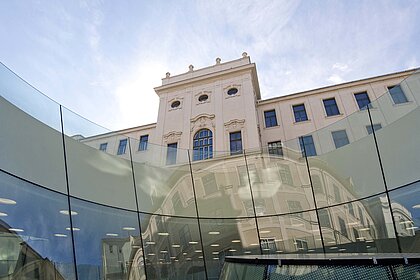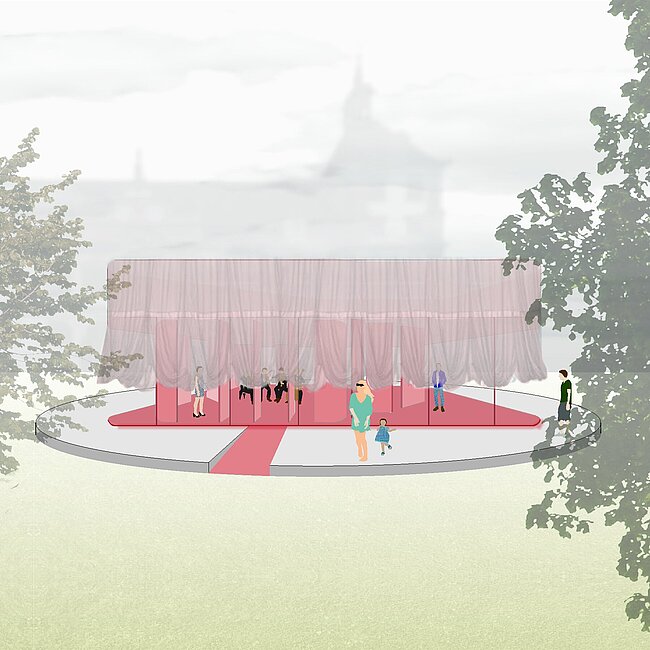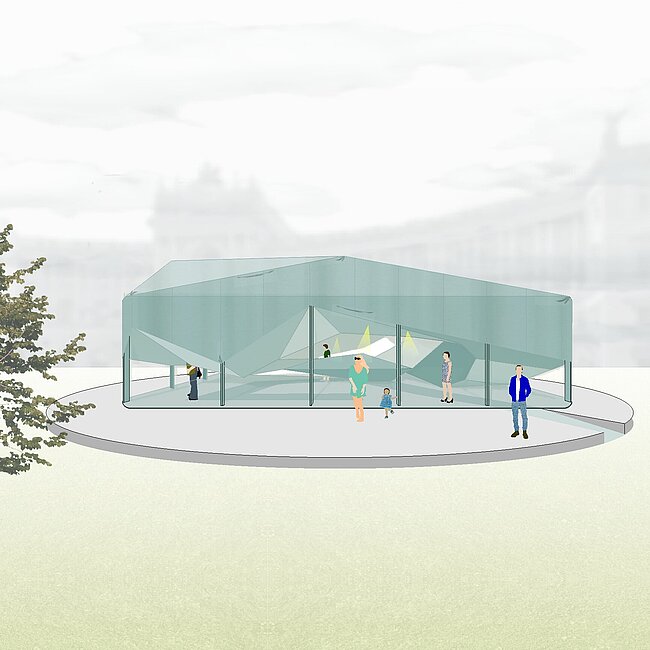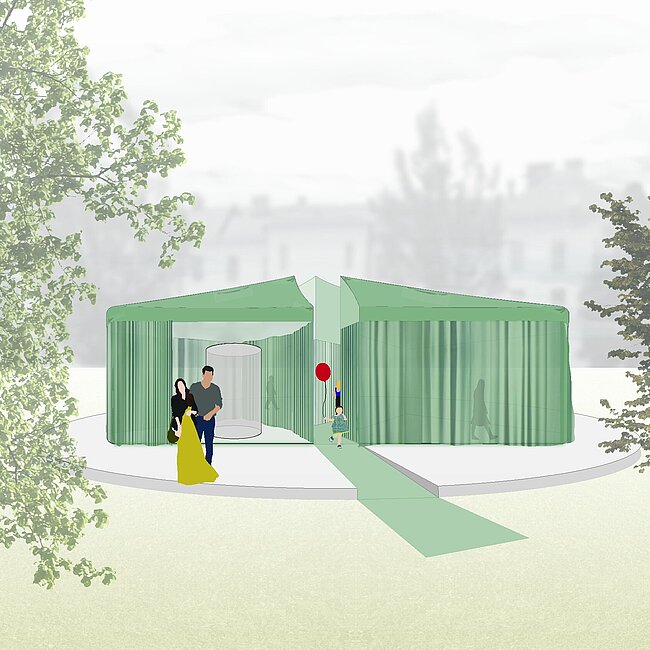as part of SHOWING STYRIA 2025
Pavilions
Ambition & Illusion: History Repeating?

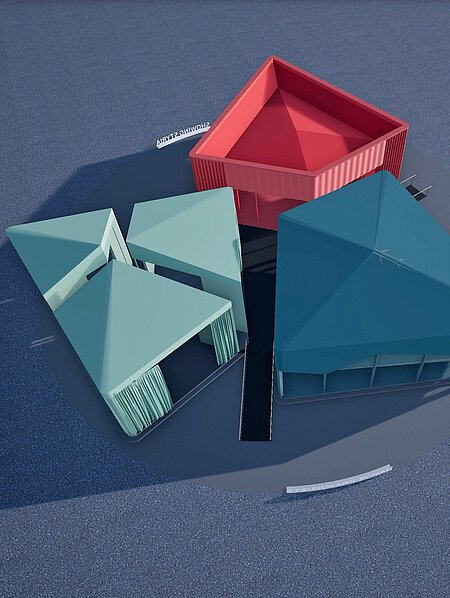
Image Credits
Special exhibition
Location
Schloss Eggenberg, Schloss Eggenberg Park and other locations
Duration
12.03.-30.03.2025 Vienna, Heldenplatz
26.04.-02.11.2025 Schloss Eggenberg
Curatorial Team Pavilion
Head: Günther Holler-Schuster
Show all
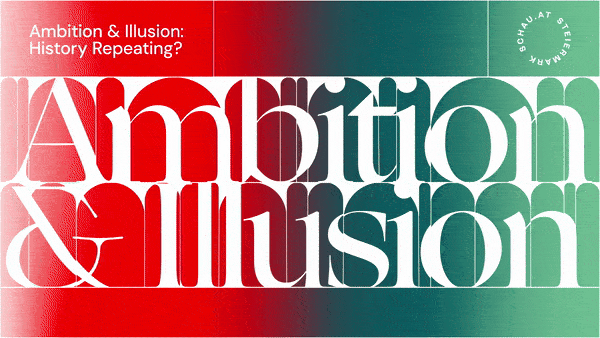
Three pavilions for SHOWING STYRIA 2025
Three pavilions will be part of SHOWING STYRIA in 2025. The design concept comes from the Graz-based architectural group studioWG3 and aims to ‘interpret the history, architecture and beauty of Schloss Eggenberg in an innovative and creative way’. The design, which emerged from an invited competition, realises a highly exciting and narrative architecture that conveys the idea of the palace, but also fades it out in an innovative way. While baroque palace buildings were eminent spaces for art in the sense of the idea of the Gesamtkunstwerk, this idea is taken up in the pavilions.
The temporary architecture sets the scene for narrative elements - it picks up on baroque theatricality, for example, as well as the country's topographical features and the connection between politically divided regions. The pavilions are not only open to the positions of contemporary art presented in them, their architecture is an integral component.
In this way, they enable a homogeneous, installative and cohesive arrangement of the artistic positions, which can be experienced both in the interplay of all three pavilions in Vienna and in their division - with the locations Schloss Eggenberg, Mariazell, Leoben and abroad.
Connecting history and the present: History Repeating?
Schloss Eggenberg was built during a turbulent and contradictory time. The Thirty Years' War made people poor and tired and drove streams of migrants across Europe. Epidemics and diseases plagued the population, as did the disastrous economic situation. Eggenberg was involved in a veritable financial scandal, which led to hyperinflation and ultimately resulted in state bankruptcy. However, Hans Ulrich von Eggenberg was able to increase his wealth.
Ultimately, the ‘Little Ice Age’ plagued the country for a good century.
We are currently experiencing something similar when we think of the current theatres of war, not solely in the Middle East and Ukraine. Economic misguided developments and the associated income poverty are becoming ever more pressing. The climate crisis caused in part by humans as an expression of the Anthropocene, like the numerous armed conflicts, is leading to enormous migration flows. One could be forgiven for thinking that history is repeating itself.
Stereotypical ideas and the tendency to judge by appearances give rise to the expectation that history can be corrected in this repetition. But this state of affairs is unattainable and harbours the danger of revisionism.
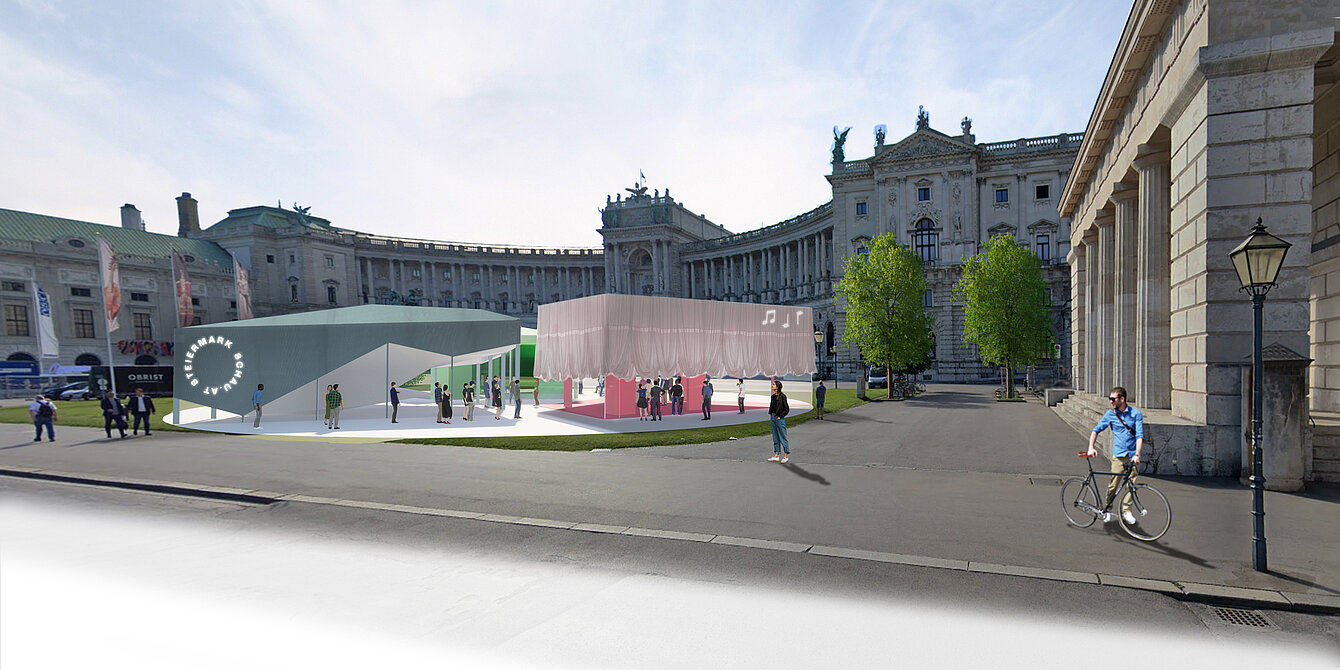
Image Credits
Diversity of artistic positions
The artistic positions assembled in the pavilions, insofar as they do not deal directly with the dimension of history, are placed in precisely this context and are thus given new possibilities for reception. The artistic reference to the past is subjective and selective.
The exhibition History Repeating? extends over three pavilions, each with completely different spaces. The artistic positions are correspondingly diverse - both in terms of their content and their formal nature. Both Styrian and national artists are on show. Generations have been deliberately mixed, as has the varying degree of international appeal. Some of the works on display already exist and are presented here in new contexts. Many works are also newly conceived and realised for this exhibition.
At the respective pavilion locations, programmes will be developed with local art and cultural operators to facilitate regional integration.
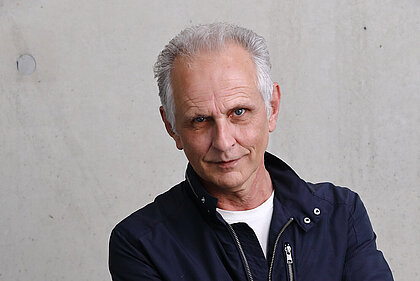
Image Credits
Günther Holler-Schuster
Curator Pavilions
The exhibition History Repeating? extends over three pavilions, each with completely different spaces. The artistic positions are correspondingly diverse, both in terms of their content and their formal nature. Generations of artists are deliberately mixed, as is the varying degree of international reach and appeal.








